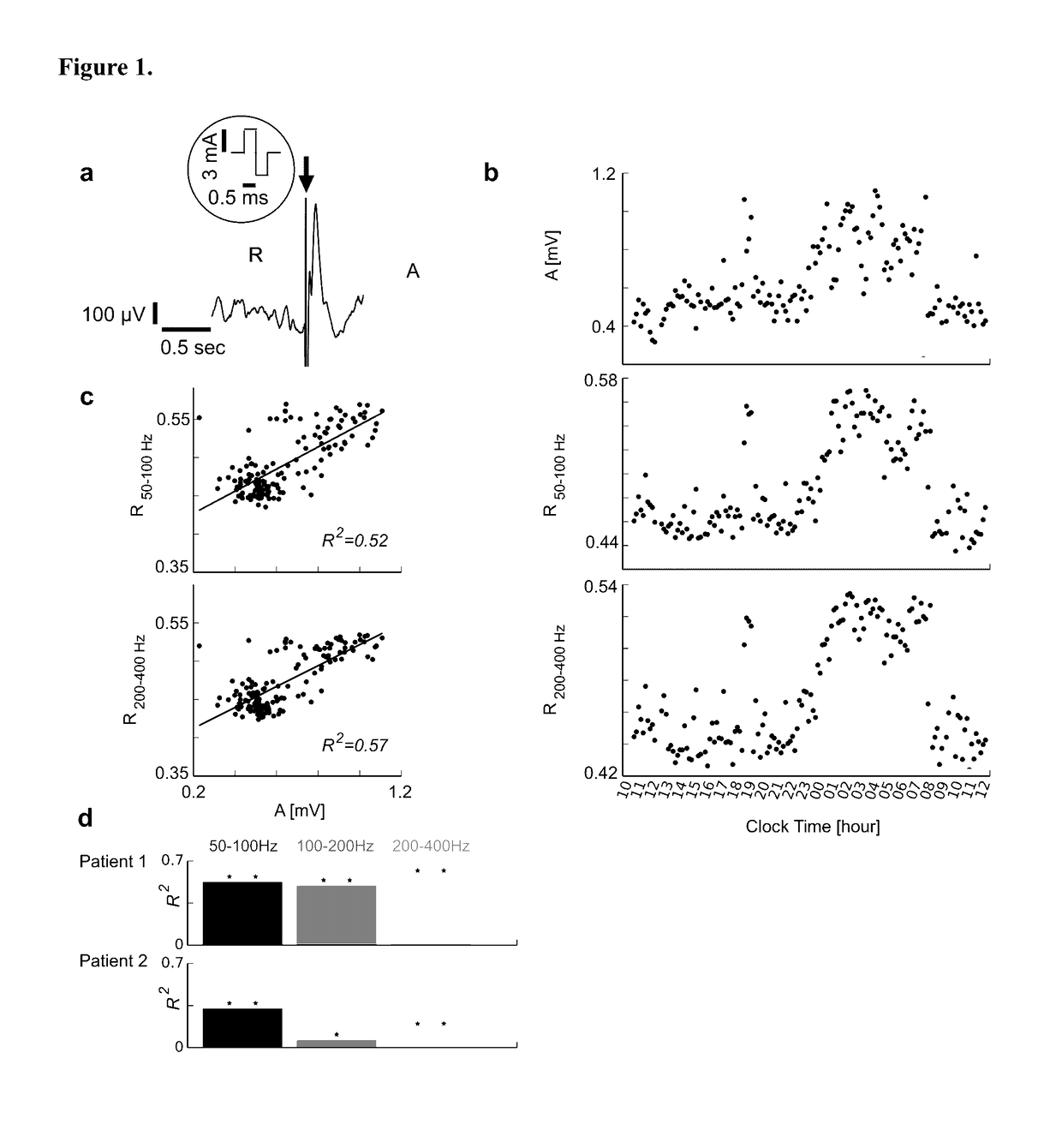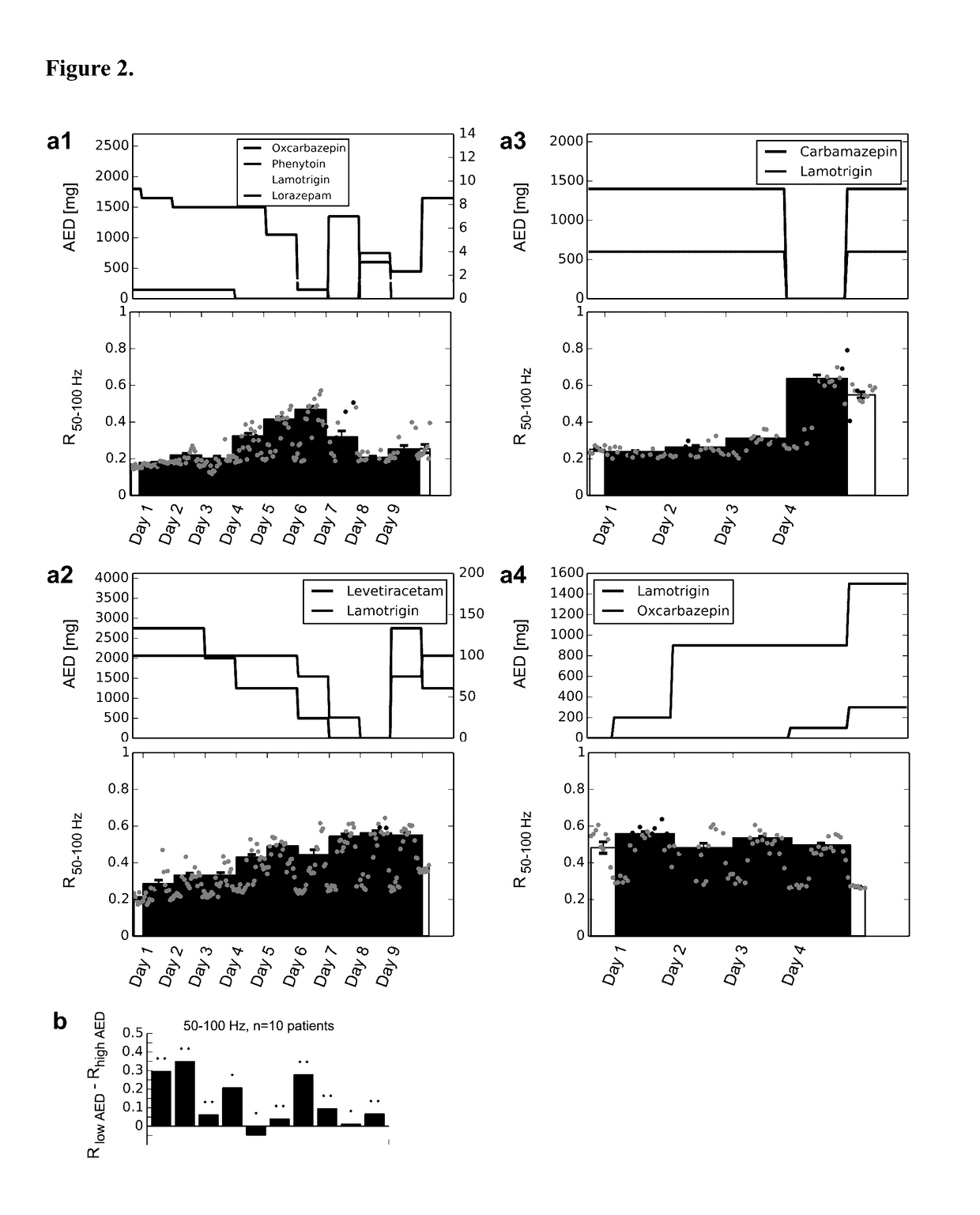Monitoring human brain excitability using synchronization measures
a brain excitability and synchronization technology, applied in the field of brain and brain network excitability, can solve problems such as the increase of epileptic seizures risk, and achieve the effect of estimating brain excitability
- Summary
- Abstract
- Description
- Claims
- Application Information
AI Technical Summary
Benefits of technology
Problems solved by technology
Method used
Image
Examples
examples
[0090]It should be appreciated that the invention should not be construed to be limited to the example that is now described; rather, the invention should be construed to include any and all applications provided herein and all equivalent variations within the skill of the ordinary artisan.
Measuring Brain Excitability in Epilepsy Patients
[0091]To evaluate the correlation between synchronization R measured from ongoing activity and more direct, current state-of-the-art measures of brain excitability we probed cortical excitability in human electrocorticogram in the most direct way by electrical stimulation. Previous work has shown that the amplitude of evoked cortical potentials by short pulses of electrical stimulation is a direct measure of cortical excitability: while small amplitudes indicate a comparably small excitability, large responses suggest excitability to be high [3, 2, 22]. We designed a stimulation protocol which allowed us to measure electrical stimulation evoked resp...
PUM
 Login to View More
Login to View More Abstract
Description
Claims
Application Information
 Login to View More
Login to View More - R&D
- Intellectual Property
- Life Sciences
- Materials
- Tech Scout
- Unparalleled Data Quality
- Higher Quality Content
- 60% Fewer Hallucinations
Browse by: Latest US Patents, China's latest patents, Technical Efficacy Thesaurus, Application Domain, Technology Topic, Popular Technical Reports.
© 2025 PatSnap. All rights reserved.Legal|Privacy policy|Modern Slavery Act Transparency Statement|Sitemap|About US| Contact US: help@patsnap.com



